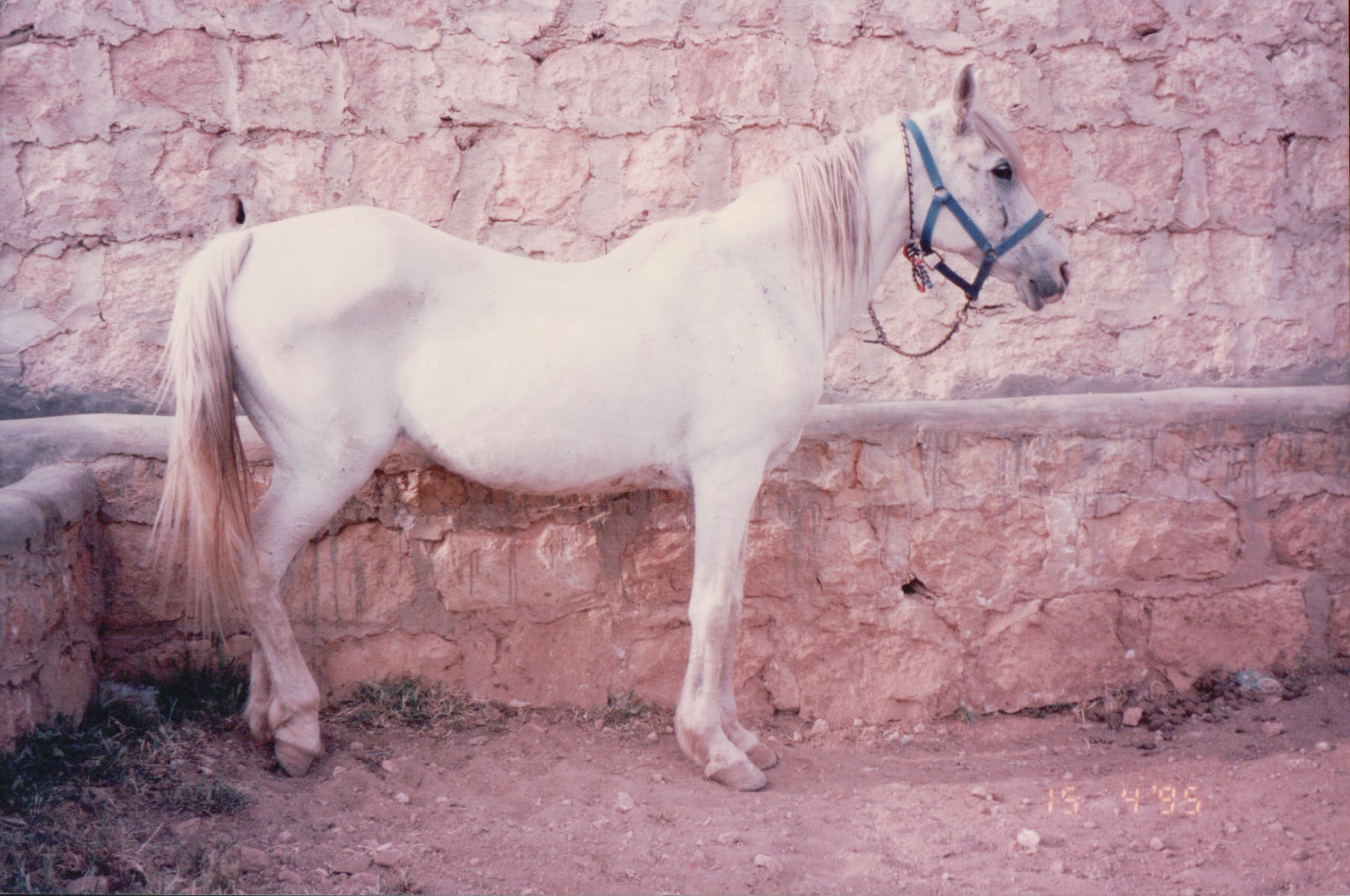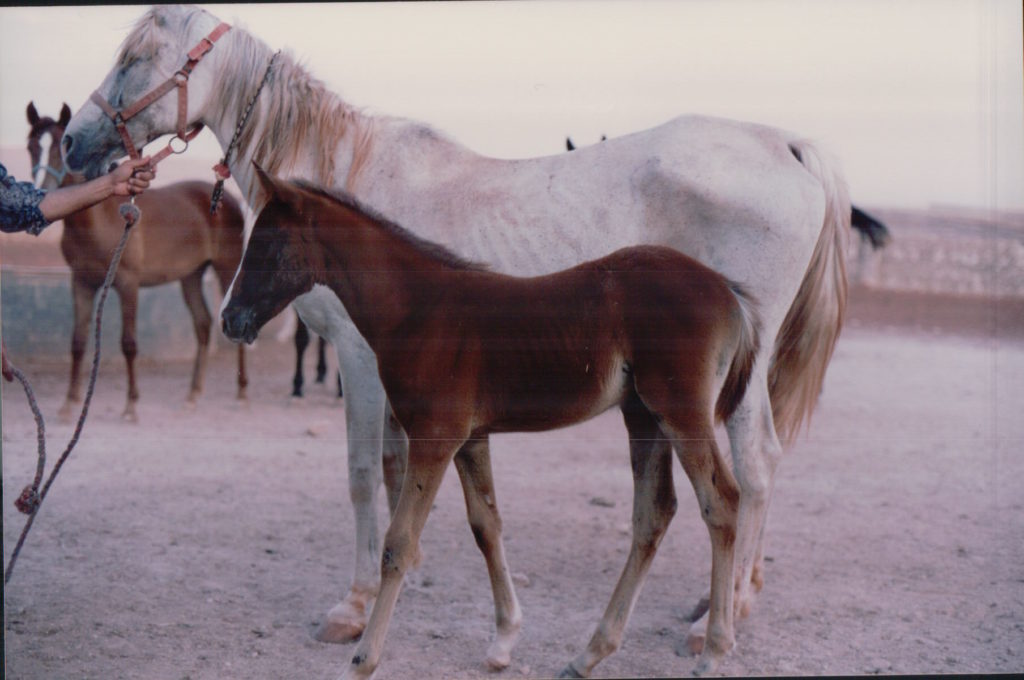Samhan strain, Syria, mid-1990s
I recently took part in a discussion on Facebook about the Samhan strain. Mohammed al-Matrooshi of the UAE had posted a photo which Carl Raswan had taken of a Samhat Qumay’ mare of the Ruwalah. Not posting here because I assume Raswan’s photo is copyrighted. Someone asked if the strain was extinct.
I then shared a photo of this beautiful Samhat Qumay’ mare, which I had taken in the early 1990s outside Aleppo. She had come from the area of al-Mayadin, in the valley of the Euphrates, to be covered by one of the Jabri stallions. She was not registered. The ‘Aqayat got most of their strains from the Sba’ah.

Then, out of the blue, someone from that same area posted a photo of his chestnut mare, and said that she was the grand-daughter of the above mare, and that the strain was alive and well.
Then I dug in my own photo archives and found another photo of the same grey mare, one year later, this time with her daughter by my stallion Dahiss, the ‘Ubayyan Sharrak/Suhayli, then with Radwan Shabareq. I need to show it the man from al-Mayadin, to see if he recognizes the filly, who could be, maybe, the dam of his mare.


I love that strain. Anne Blunt saw a mare from that strain at the Fadaan/Sba’ah/Gomussah combined encampment on 1-5 April 1881:
“Samhan el Gomeaa – bay – white hind feet, the mare Mr. Henderson admired. Disappointing – especially after being told she was the finest Mr. Skene had ever seen. It seems clear that the accident to her fetlock is from some defect in the quality of the sinews and bones, for the other three legs are not what could be called good. The colour is a very handsome bay, the forequarter good, hindquarter rather weak, head fine in profile mitbakh good, forehead rather narrow though prominent enough, nose fairly small.”
and also:
“The Samheh mare a great disappointment — however a gift of a couple of mejidies one to the half owner (a Tudmori) of the mare, the other to the man who bought her from Daybil’s settled the matter.”
Also a stallion from the same strain, three years earlier, also at the Sba’ah camp, April 7-8, 1878:
“Then we saw a 3 year old colt, bay, two white hind feet, very black legs and with great power, and at least 15 hands high. His head and neck wanted fineness but he was certainly good looking — his breed Samhan el Gomea. However, we do not want a horse.”
and, the next day:
“The 3 year old Samhan el Gomea was brought. But we did not like him so much this morning as we did yesterday and thought he did not move well.”